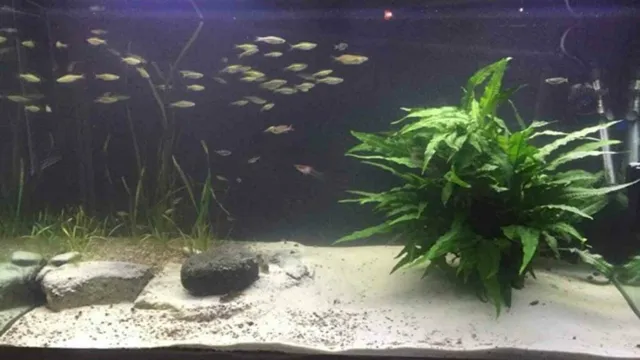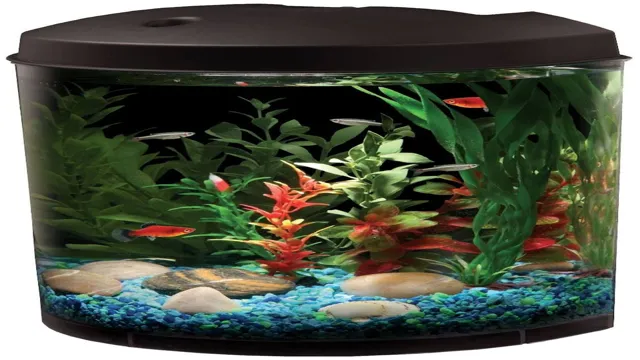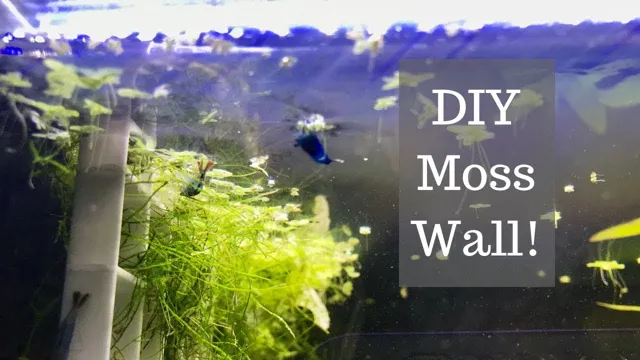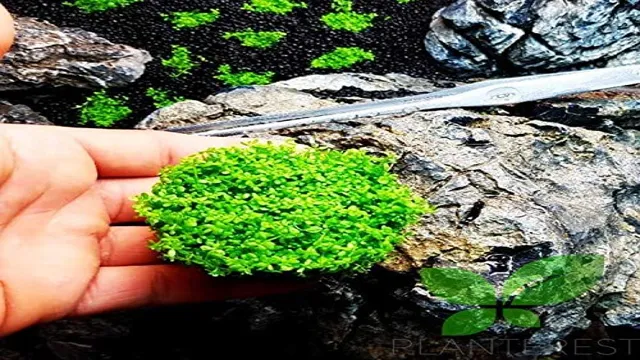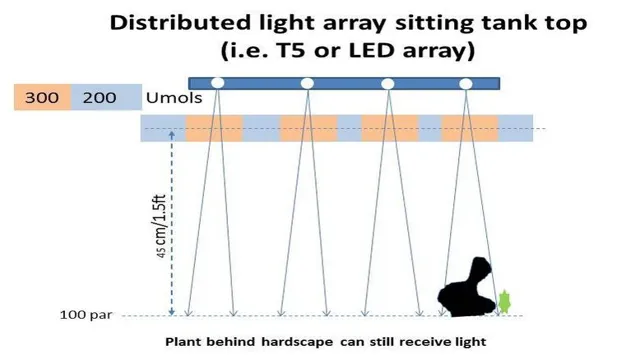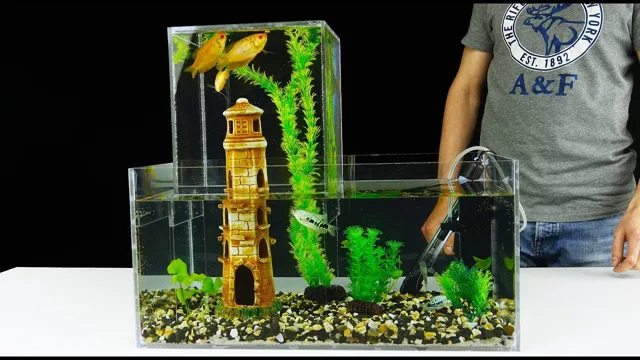If you’re an aquarium enthusiast, then you understand the importance of achieving balance in your aquatic environment. Whether you’re just starting out with your first aquarium or you’re a seasoned hobbyist, balancing your tank’s ecosystem is vital to the health and happiness of your aquatic life. But what exactly does it mean to achieve balance in aquariums, and how can you make it happen? In this blog, we’ll explore the concept of balance in aquariums, why it’s important, and the steps you can take to achieve it.
So, grab your fish food and get ready to dive in!
Understanding Light and CO2
When it comes to keeping a healthy aquarium, striking a balance between light and CO2 is crucial. Both factors play a crucial role in the growth of plants in the tank, which in turn affects the overall health of the aquatic environment. Light provides energy for photosynthesis, while CO2 is an essential component in the process.
The general rule of thumb is to maintain a balance that allows plants to grow without causing rapid algae growth, which can be harmful to aquatic life. To achieve this, aquarists need to take into account the type and intensity of lighting, as well as the amount of CO2 injected into the tank. Proper filtration and regular monitoring of the tank’s water chemistry can also help to ensure the balance is maintained.
By achieving the right balance of light and CO2, aquarists can create a beautiful, healthy aquarium that is a joy to behold.
Measuring Light Intensity
When it comes to understanding the effects of light and CO2 on plants, measuring light intensity is important. Light is essential for the process of photosynthesis, which is how plants create food. CO2 and other factors, such as temperature and moisture, also play important roles in a plant’s growth.
But without the right amount and intensity of light, plants can’t thrive. Therefore, it’s crucial to measure light intensity accurately. In fact, varying levels of light can impact a plant’s growth cycle, affecting everything from its stem length and flowering period to its overall yield.
That’s why growers and plant researchers alike use specialized tools to monitor light intensity and ensure optimal growing conditions for their plants. By doing so, they can maximize growth and harvests, and even experiment with different lighting setups to see what works best.
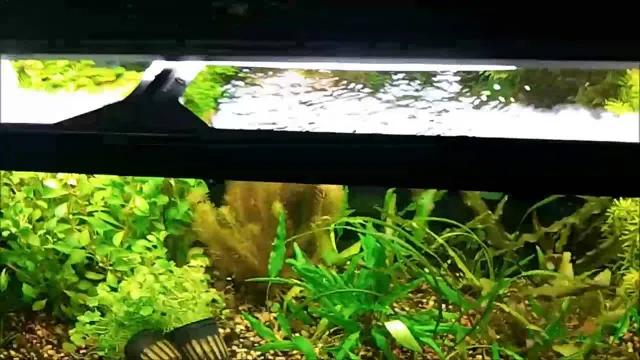
Understanding CO2 in Aquariums
Understanding CO2 in Aquariums When it comes to creating a healthy and thriving aquarium, understanding the role of light and CO2 is crucial. Light is essential for photosynthesis in plants, providing the energy they need to convert CO2 into oxygen. CO2, on the other hand, is the raw material that plants use to grow and thrive.
Without enough CO2, plants may become stunted or even die. When it comes to maintaining a healthy balance of CO2 in your aquarium, it is important to consider factors such as the size of your tank, the number of plants, and the intensity of your lighting. By providing your plants with the right amount of light and CO2, you can create a beautiful and vibrant ecosystem that will thrive for years to come.
So, if you want to ensure that your aquarium is healthy and thriving, be sure to consider the role of light and CO2 in supporting plant growth and creating a balanced environment.
Factors Affecting Light and CO2 Balance
One of the most important factors in balancing light and CO2 in your aquarium is understanding the needs of your plants. Different plants have different requirements for light intensity and duration, as well as CO2 levels. Some plants may thrive in low light and low CO2 environments, while others may require high levels of both.
Another important factor to consider is the intensity and duration of light. Too much light can cause algae growth, while too little can stunt plant growth. Similarly, too much CO2 can be harmful to fish and other aquatic life, and too little can lead to poor plant growth.
To balance light and CO2, it is important to monitor and adjust these factors as needed based on the specific needs of your aquatic plants. Regular testing and observation are key to maintaining a healthy and balanced aquarium environment. (See Also: How to Increase pH in Aquarium with Baking Soda: Tips and Techniques for Optimal Water Conditions)
Aquarium Size and Shape
When it comes to setting up your aquarium, the size and shape can have a significant impact on the balance of light and CO2 in your tank. Larger tanks will require more light and CO2 to reach all corners of the tank and support plant growth. Additionally, the shape of the tank can impact the distribution of light and CO2, with taller tanks requiring stronger light sources to penetrate down to the bottom and cylindrical tanks having less surface area for gas exchange.
It’s important to consider these factors when selecting the size and shape of your aquarium, as they can affect the health and growth of your aquatic plants and animals. By choosing the right size and shape, you can ensure optimal lighting and CO2 levels for a thriving aquatic ecosystem.
Aquatic Plants and Their Needs
Aquatic plants require a mindful balance of light and CO2 to thrive. The amount of light they receive and the levels of CO2 in the water are crucial factors that affect their survival. Adequate light is vital for the photosynthesis process, which provides the plant with energy and oxygen.
Insufficient light will undoubtedly lead to stunted growth, reduced photosynthesis, and, eventually, a dying plant. On the other hand, too much light may cause more harm than good by overheating the water and oxygen depletion. Similarly, CO2, if not appropriately balanced, will cause an unhealthy environment for the plant’s growth.
Insufficient CO2 will limit plant growth, while an excess will cause the water’s acidity, leading to severe damage for the plant. Therefore, it is essential to maintain a balance of both light and CO2 levels in aquariums or ponds with aquatic plants to promote their growth and health.
Balancing Light and CO2 Levels in Aquariums
If you own an aquarium, one of the most important things you need to do is maintain the balance between light and CO2 levels. This can be a bit tricky, but it’s crucial to keep your fish happy and healthy. Light is essential for plants to grow and thrive, but too much of it can cause an overgrowth of algae, which can harm your fish.
On the other hand, CO2 is also a critical factor for plant growth. However, too much CO2 can be toxic to fish and other aquatic animals. So, how do you balance these two vital elements? One simple way is to use a timer for your aquarium lights, ensuring that they’re on for a maximum of 8-10 hours a day, depending on the type of plants you have.
You can also use a CO2 diffuser and constantly monitor the CO2 levels in your aquarium. By regulating the light and CO2 levels in your aquarium, you can maintain a healthy and balanced environment for your fish and plants to thrive.
Proper Lighting
When it comes to keeping an aquarium, lighting is more important than most people initially realize. Not only does proper lighting enhance the aesthetic appeal of the tank, but it also plays a crucial role in balancing CO2 levels. If there isn’t enough light, the plants won’t be able to photosynthesize and produce oxygen, which can lead to a buildup of harmful CO
Conversely, too much light can cause excessive photosynthesis and an overproduction of oxygen, which can actually make it difficult for fish to breathe. It’s all about finding the right balance. Many aquarium hobbyists recommend LED lights, as they are energy-efficient and customizable when it comes to color and intensity.
By finding the perfect lighting setup, you can ensure that both your plants and fish thrive in their underwater home.
Types of CO2 Supplements
If you’re looking to create a thriving aquarium, balancing light and CO2 levels is essential. That’s where CO2 supplementation comes in. There are several types of CO2 supplements available, including liquid CO2, CO2 tablets, and CO2 injection systems. (See Also: How Old is the Aquarium in Clearwater Florida? Discover Its Fascinating History and Evolution!)
Liquid CO2 is an easy-to-use option that requires adding a small amount to your aquarium regularly. CO2 tablets dissolve in the water and release CO2, but they require frequent dosing. CO2 injection systems offer precise control over CO2 levels, but they can be more challenging to install and maintain.
No matter which type of CO2 supplement you choose, it’s important to monitor your aquarium’s CO2 levels regularly. With the right balance of light and CO2, your aquarium can thrive and support a diverse range of aquatic life. So, keep your plants and fish happy by finding the best CO2 supplement for your aquarium.
Plants and CO2 Level Adaptation
Plants have a remarkable ability to adapt to different levels of CO2 in their environment. In aquariums, it’s important to balance both light and CO2 levels to maintain optimal plant growth and health. If the CO2 levels are too low, plants won’t be able to photosynthesize efficiently, and too much light can lead to an excess of algae growth.
On the other hand, too much CO2 can be dangerous for fish and other aquatic life, so it’s essential to monitor the levels regularly. Thankfully, there are several ways to achieve a healthy balance, like using CO2 injectors or introducing plants that naturally absorb excess CO By caring for your aquatic plants, you’ll not only create a beautiful, healthy environment but also support the overall well-being of your aquarium ecosystem.
Maintaining Balance in Aquariums
If you’re an aquarium enthusiast, you know that finding the right balance of light and CO2 in your aquarium is crucial for a healthy and thriving aquatic ecosystem. The amount of light and CO2 your aquarium needs will depend on the type of plants and fish you have. Too much light can cause algae growth, while too little light will inhibit plant growth.
Similarly, too much CO2 can be harmful to fish, while too little CO2 will make it difficult for plants to photosynthesize and release oxygen into the water. To maintain the perfect balance, it’s important to invest in a high-quality lighting system and CO2 injector. You can also regulate the amount of light and CO2 by monitoring your aquarium’s water parameters regularly and making adjustments accordingly.
Overall, maintaining balance in your aquarium is all about finding the perfect harmony between light, CO2, plants, and fish.
Regular Water and Filter Maintenance
Maintaining a balanced and healthy environment in your aquarium should be your top priority, and it requires regular water and filter maintenance. These simple tasks can prevent your fish from falling ill or worse, dying prematurely. Keeping up with water changes is the most important step you can take to maintain water quality and prevent the accumulation of harmful chemicals.
Regularly replacing 10-25% of the water bi-weekly can help to reduce nitrate levels, which can be toxic to your fish when they reach high concentrations. Additionally, cleaning your filter every 4-6 weeks is essential to remove excess debris that can cause filter clogs and impede water flow. Neglecting your aquarium’s maintenance can cause imbalances that can harm your fish.
Think of your aquarium as a home outside of the water, and just as you wouldn’t leave your home a mess, you should keep your aquarium well-maintained to create a healthy environment for your aquatic pets.
Adjustment of Lighting and CO2 Levels
Maintaining Balance in Aquariums: Adjustment of Lighting and CO2 Levels One of the most important aspects of maintaining a healthy and thriving aquarium is achieving the right balance of lighting and CO2 levels. Proper lighting is crucial to not only promote the growth and health of your aquatic plants but also to showcase the beauty of your aquarium. However, too much or too little light can cause algae overgrowth or stunt plant growth.
Thus, it is crucial to get the lighting duration and intensity right according to the type of plants you have. On the other hand, CO2 is an essential nutrient for plants, and it is necessary to ensure that they receive enough of it for optimal growth. You can achieve this by adding CO2 through a CO2 injection system or using liquid CO2 supplements.
Maintaining a chemical balance in the water is challenging, but with patience and trial and error, it is easily achievable. It’s important to pay close attention to your aquatic plants as they are a good indicator of whether you’re doing things right or not. If you notice any signs of stress or poor growth, adjust your lighting and CO2 levels accordingly until you find the right balance. (See Also: How to Grow Live Plants in Your Freshwater Aquarium: Tips for a Thriving Aquatic Garden)
Conclusion
In the end, finding the perfect balance between light and CO2 in your aquarium is a bit like walking a tightrope. It requires careful attention, patience, and a willingness to make adjustments as needed. But with a little know-how and some trial and error, you can create a stunning aquatic ecosystem that thrives.
So dive in, experiment with your lighting and CO2 levels, and let your inner aquascaper shine!”
FAQs
Why is it important to balance light and CO2 in an aquarium?
Balancing light and CO2 is important because it helps maintain the overall health and growth of plants in the aquarium. Too much or too little of either can cause algae blooms or stunted plant growth.
How can I measure the CO2 levels in my aquarium?
You can measure CO2 levels using a drop checker or electronic CO2 monitor. These tools will give an accurate reading of the CO2 levels in your aquarium water.
How long should I keep my aquarium lights on each day?
The recommended light duration for a planted aquarium is 8-10 hours per day. Too much light can cause algae growth, and too little can stunt plant growth.
What are some ways to increase CO2 levels in an aquarium?
You can increase CO2 levels by adding a CO2 injection system, using DIY CO2 methods, or adding water circulation to help distribute CO2 throughout the aquarium.
Can I balance light and CO2 without using artificial light?
Yes, there are low-light plants that can thrive in natural lighting conditions. However, using artificial light allows for more control over light intensity and duration, which can help achieve optimal plant growth.
What are some signs that my aquarium might have an imbalance of light and CO2?
Signs of imbalance can include excessive algae growth, stunted plant growth, or yellowing/browning of leaves. Testing CO2 levels and adjusting light intensity can help correct these issues.
Can fish be harmed by an imbalance of light and CO2 in the aquarium?
In most cases, fish will not be directly harmed by an imbalance of light and CO2. However, excessive algae growth or lack of plant growth can lead to water quality issues that can harm fish.


